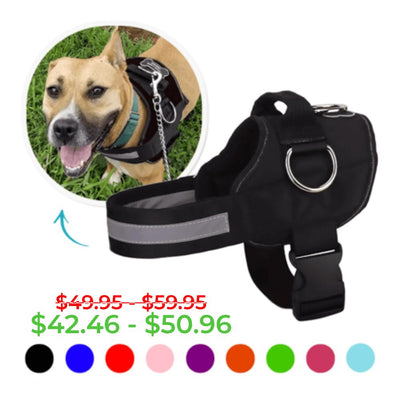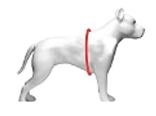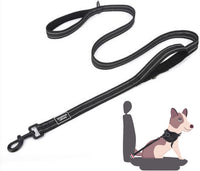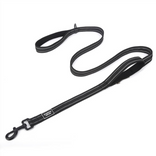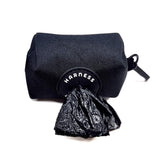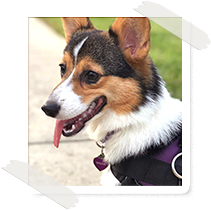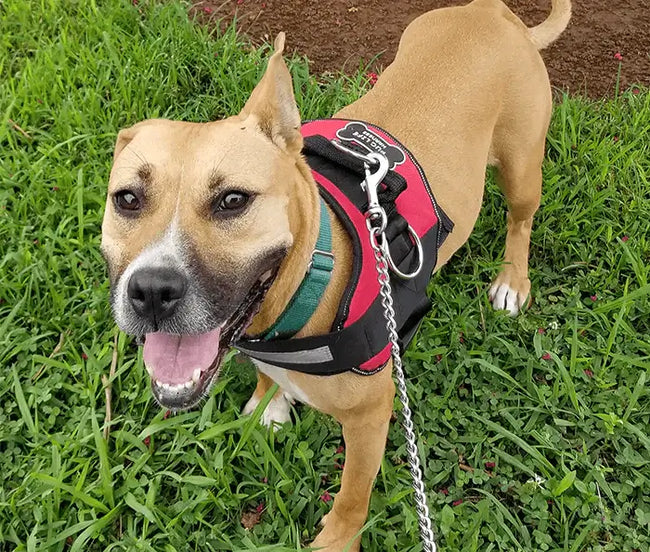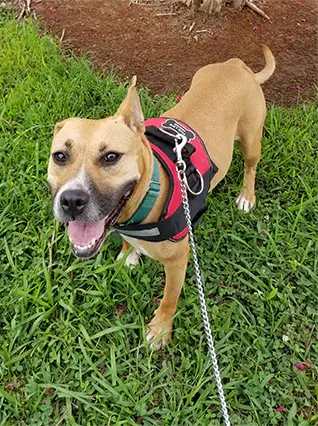Why do dogs have whiskers?

What’s that on your dog’s face? Are those...whiskers?
Countless species of mammals are known to have these facial features, but do we know what purpose these whiskers serve for our dogs? When you think of whiskers and pets, typically you think of feline whiskers, not canine whiskers. So what’s the deal with the whiskers on your dog’s face?
Pet owners, look no further! We’ve got the answers for your pup’s whiskers here.
What are whiskers?
The official name for these whiskers is vibrissae and is defined by it’s Wiki as “a type of mammalian hair that are typically characterised, anatomically, by their long length, large and well-innervated hair follicle, and by having an identifiable representation in the somatosensory cortex of the brain. They are specialised for tactile sensing.”
These whiskers, or vibrissae, are more sensitive than normal hair. Why is this? The increased sensitivity of whiskers, as opposed to normal hair, is due to follicles being comprised of blood vessels and nerves.

What are dog whiskers for?
Whiskers serve an important function for dogs. Scattered on your dog’s face - around their mouth, nose, and chin - whiskers act as sensory equipment. As your dog goes about their day, these whiskers are basically transmitters that work to guide your dog. Think of it as a secondary sense of sight!
For example, your dog is digging a hole in the ground but there’s a mole. The whiskers on your dog’s face touch the mole and that tells your dog something’s there and maybe I should investigate (or back up).
VCA Hospitals explains this further with an explanation of the origin of the name vibrissae saying, “Although whiskers are called “tactile hairs,” they don’t actually feel anything. They simply transmit information to sensory cells when they detect objects or movement. When air flows over, or an object brushes up against a whisker, the sensitive hair vibrates and stimulates the nerves in the hair follicle. This vibration gives whiskers their scientific name vibrissae, from the Latin word vibrio meaning “to vibrate.” Detecting subtle changes in air currents, dog whiskers transmit information about the size, shape, and speed of nearby objects, which helps dogs navigate the world.”

Do whiskers have their own language?
Seems like a silly question, but you’d be surprised! Whiskers are one way that dogs can communicate with us. As dog owners, the more we’re able to understand our canine forever friends, the better the relationship.
Whiskers can visibly show how you’re dog is feeling. According to Purina, “When a dog feels threatened, they flare their whiskers and point them forwards, which alters their body language and helps them signal to other dogs that they’re unhappy. Because of this, whiskers may also form part of a dog’s defence strategy.”

What happens if my dog’s whiskers fall off or get cut?
We’ll start by saying it isn’t advisable to cut off your dog’s whiskers. The only case it would be advisable to do so is if it is recommended by your veterinarian in a special circumstance.
When your dog doesn’t have their whiskers to act as a second set of eyes, your dog will become confused and less aware of their surroundings. This will make them seem “ditzy” in a way as their ability to detect objects wouldn’t be as good, and when it comes to the long-term, your dog’s confidence will be negatively affected.

This is just a sampling of tips and informational posts we offer at Joyride Harness. You can find more content including tips and tricks and how-tos for caring for your dog on our blog in this section.


